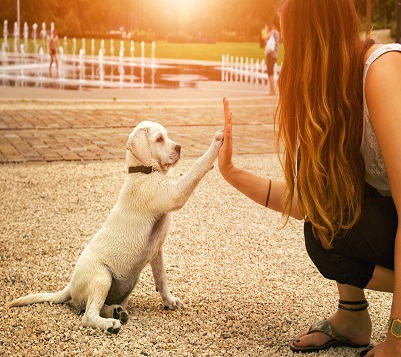As a busy, yet loving, pet owner, you want your beloved member of the family to be loved, well-cared-for and comfortable while you’re away. Whether you’re headed out of town on business or for the fun a family vacation brings, making the right preparations for your pet sitter before you leave can help ensure that everything goes smoothly while you’re gone.
1. Gather all necessary supplies
Everything the pet sitter might need during your absence should be gathered together and placed in one central location that’s highly visible. While the following list of items is not inclusive, it does provide you with a starting point that you can use with your pet:
- food and water bowls
- food
- cleaning supplies
- treats
- paper towels
- medication
- puppy pads and/or newspapers
- cat litter and scoop
- watering can for plants if necessary
- toys
- broom and dustpan
2. Keep Your Vet in the Loop
Provide your veterinarian with written notification that you’ll be going out of town and that a pet sitter will taking care of your pets at your home. In addition to including the projected dates of your absence, also include authorization that your vet can provide medical care and treatment to your pets if necessary while you’re gone.
3. Make Sure Your Pets are Up-to-Date on Their Care
Make sure that your pets are not only up-to-date on all their vaccinations but that he or she is wearing the applicable tags on their collar. The collar should also have a current identification and contact information should your pet become lost.
4. Educate the Pet Sitter
The pet sitter is there to make your pet as comfortable and happy as possible while you’re gone. To help facilitate this, be generous with the information you share with this individual. Be sure to include the following information in writing if it pertains to your pet:
- If there is an area of your home where your pet is not allowed to have access, the pet sitter should know. In addition, be sure that you secure the access points to these areas so that your pet cannot reach them.
- Tell the pet sitter about any unusual behaviors that your pet has and/or might display because you’re gone. Some examples include chewing, destructive behavior if left alone for long periods of time, hiding, changes in eating and/or bowel habits.
- Be sure to adjust the thermostat of your home before you leave in anticipation of the upcoming weather forecast. Tell the pet sitter the range of temperatures the thermostat should be set at as well as how to adjust it if needed while you’re away.
5. Address Your Pet’s Habits
If your pet loves to chew while you’re gone, be sure to provide lots of chew toys as well as extras for the pet sitter to dole out as necessary. For chewing pets and those who are destructive, remove any belongings and home furnishings that might be targeted. For pets that hide, tell the pet sitter where those places might be as well as any tactics that have worked in the past to set your pet at ease.
6. Pet Proof Your House
Even if your pet is normally docile and doesn’t explore, the change in routine could make them act in unusual ways. Go through your home through the eyes of a small child — or a curious pet — and pet proof it to make it safer.
Be sure that any medications are in their original containers and locked away in a high cabinet. Remove candy, plants, nuts and other potentially harmful items that could be eaten by your pet. Secure any dangerous supplies — such as thread and needles, paints and glue — that you use for a hobby. If your pet will have access to kitchen or garage cabinets where dangerous substances like cleaners and gasoline might be stored, be sure to secure them well.
7. Synchronize Your Lights
Make use of timers both inside and outside your home. Inside your house, program a few interior lights so they turn on at dusk and off once again at your normal bedtime. Program exterior lights to make it easier for the pet sitter to visit at night, if applicable, or install motion detectors. Tell your pet sitter which lights, if any, stay on all the time and the location of your fuse box in the event that it needs to be accessed.
8. Secure Your Home
Tell your neighbors that you’ll be going out of town but that a pet sitter will be taking care of your pets at your home while you’re away. Be sure that any fences and gates on your property are secured, locked and in good repair. Inside your home, lock all doors and windows. Don’t forget about bedroom doors, sliding glass doors and/or garage doors if they’re applicable.
When you use a pet sitter, you’re forming a partnership with someone who loves and cares for animals as much as you do. At Barking Life Pet Concierge, we provide pet sitting and dog walking services as an alternative to dog boarding for pet owners in Katy, TX and the surrounding areas. Contact us today to learn more or to schedule an in-home consultation.

